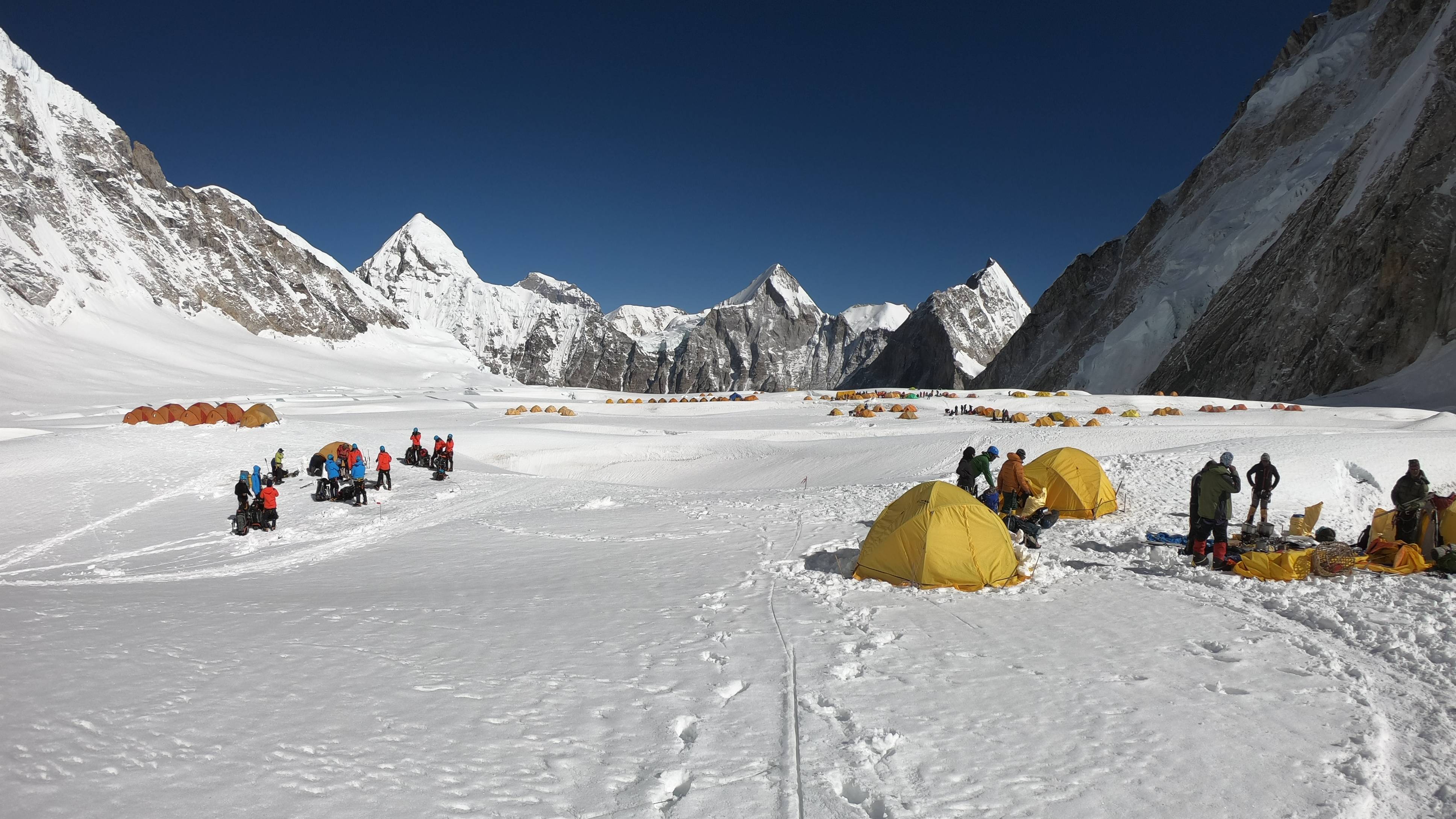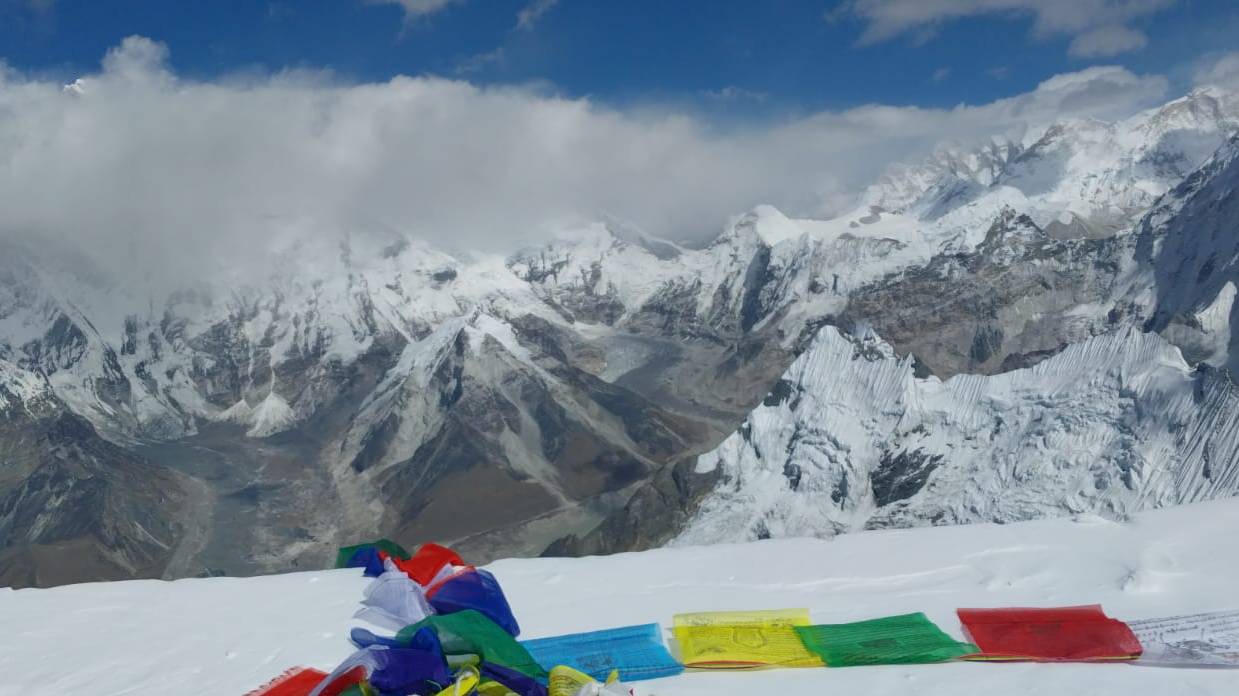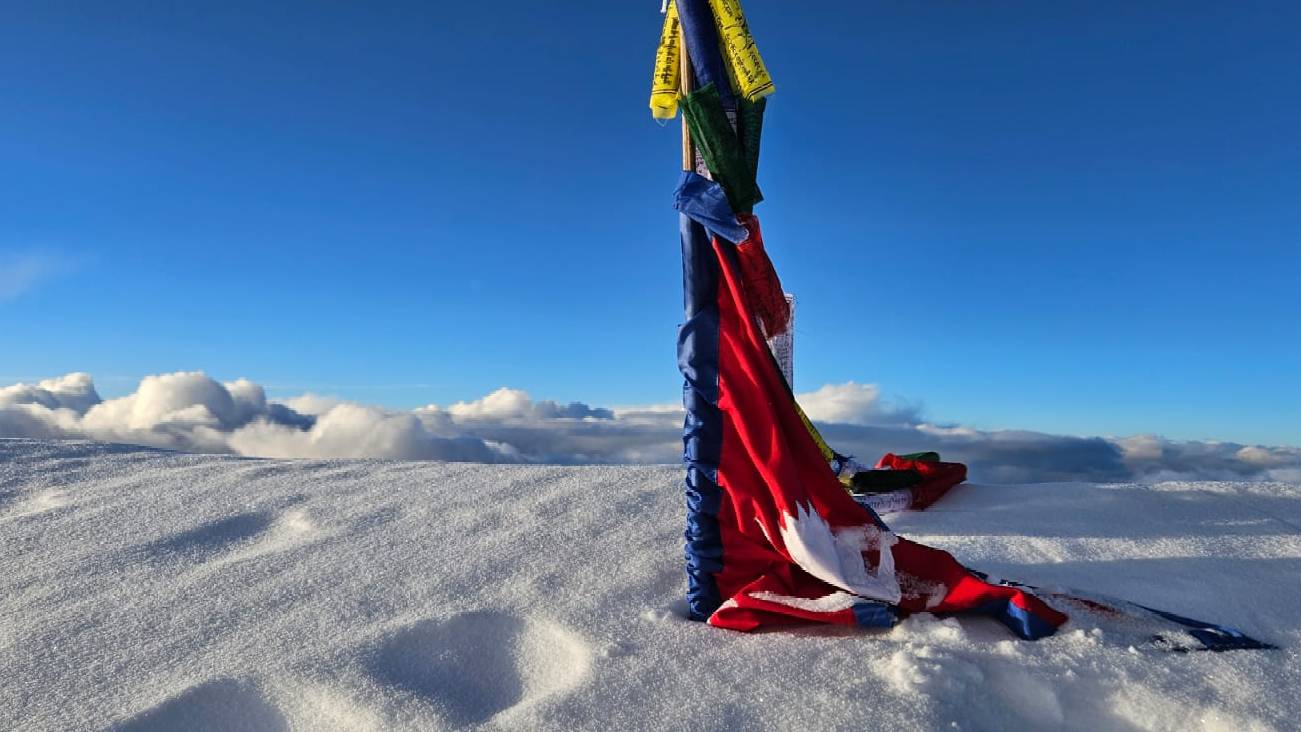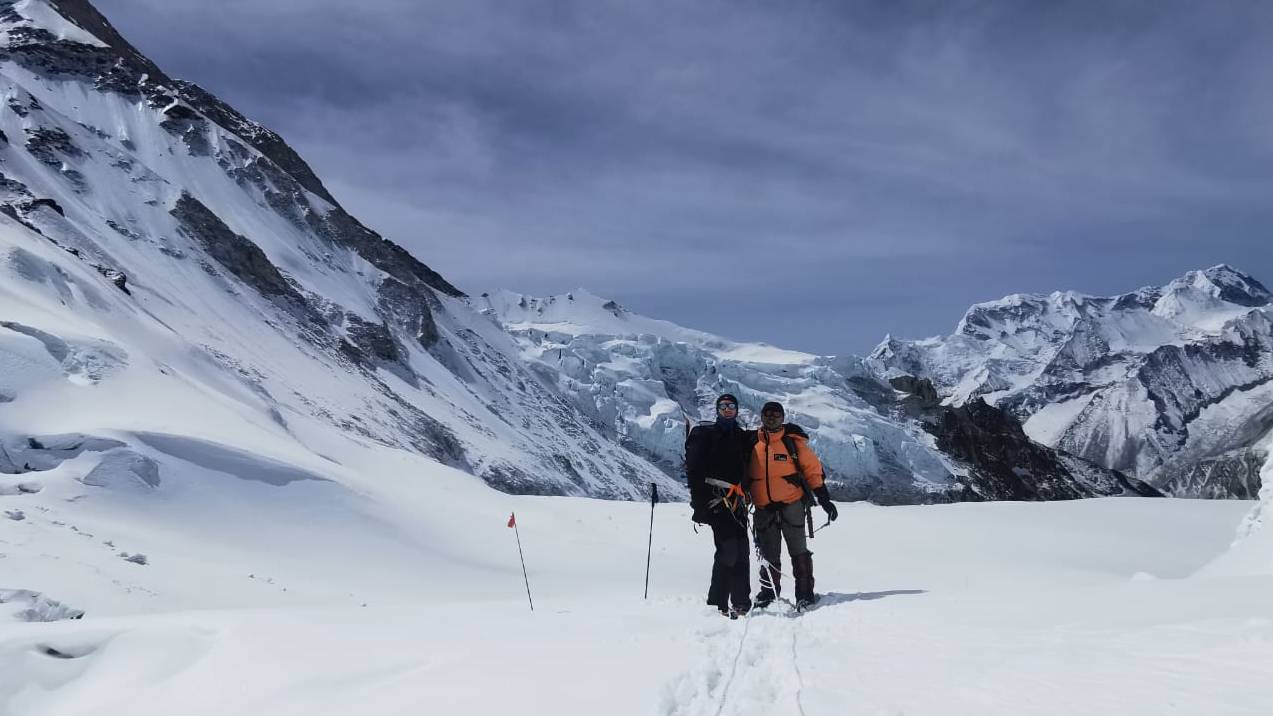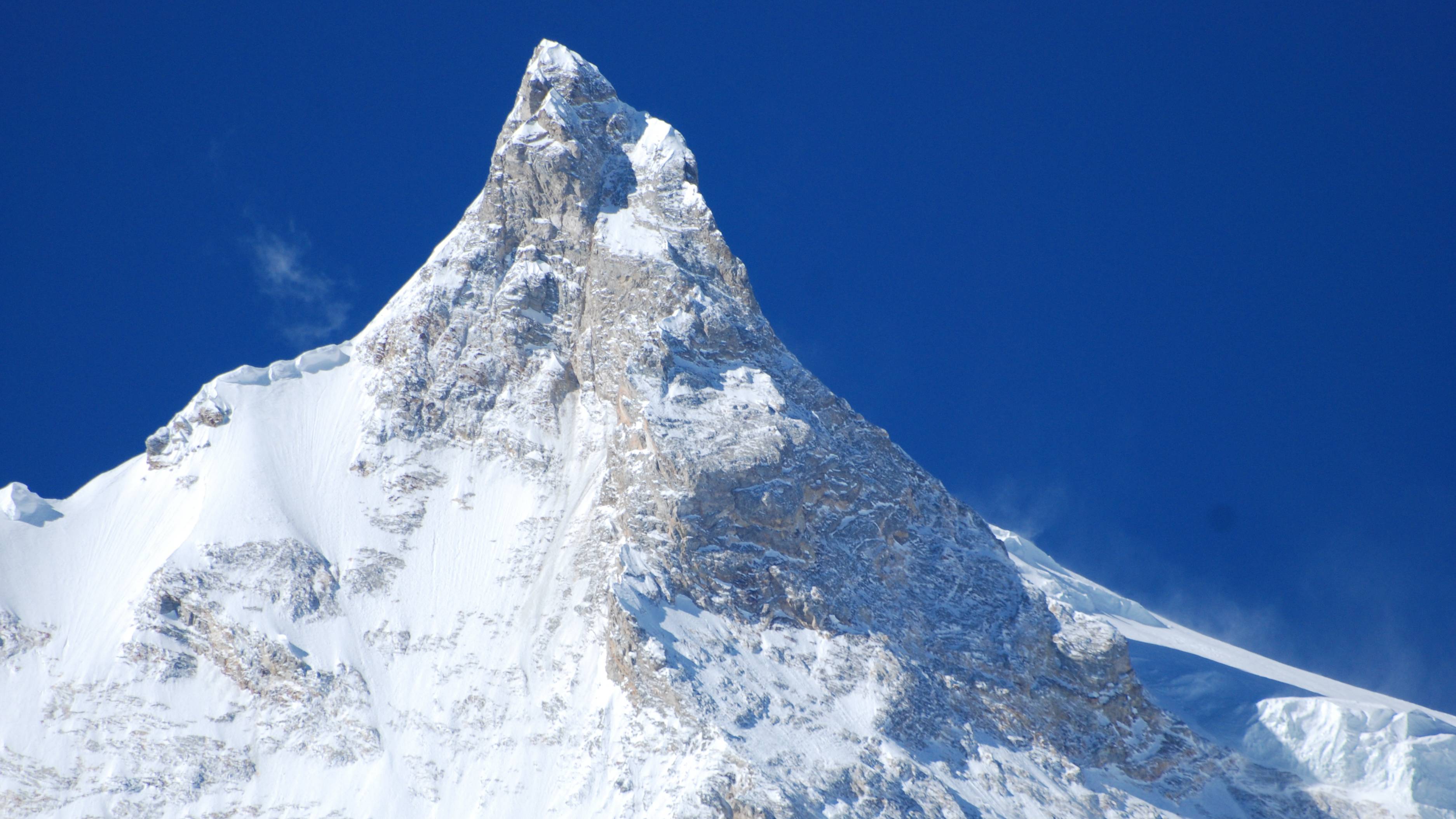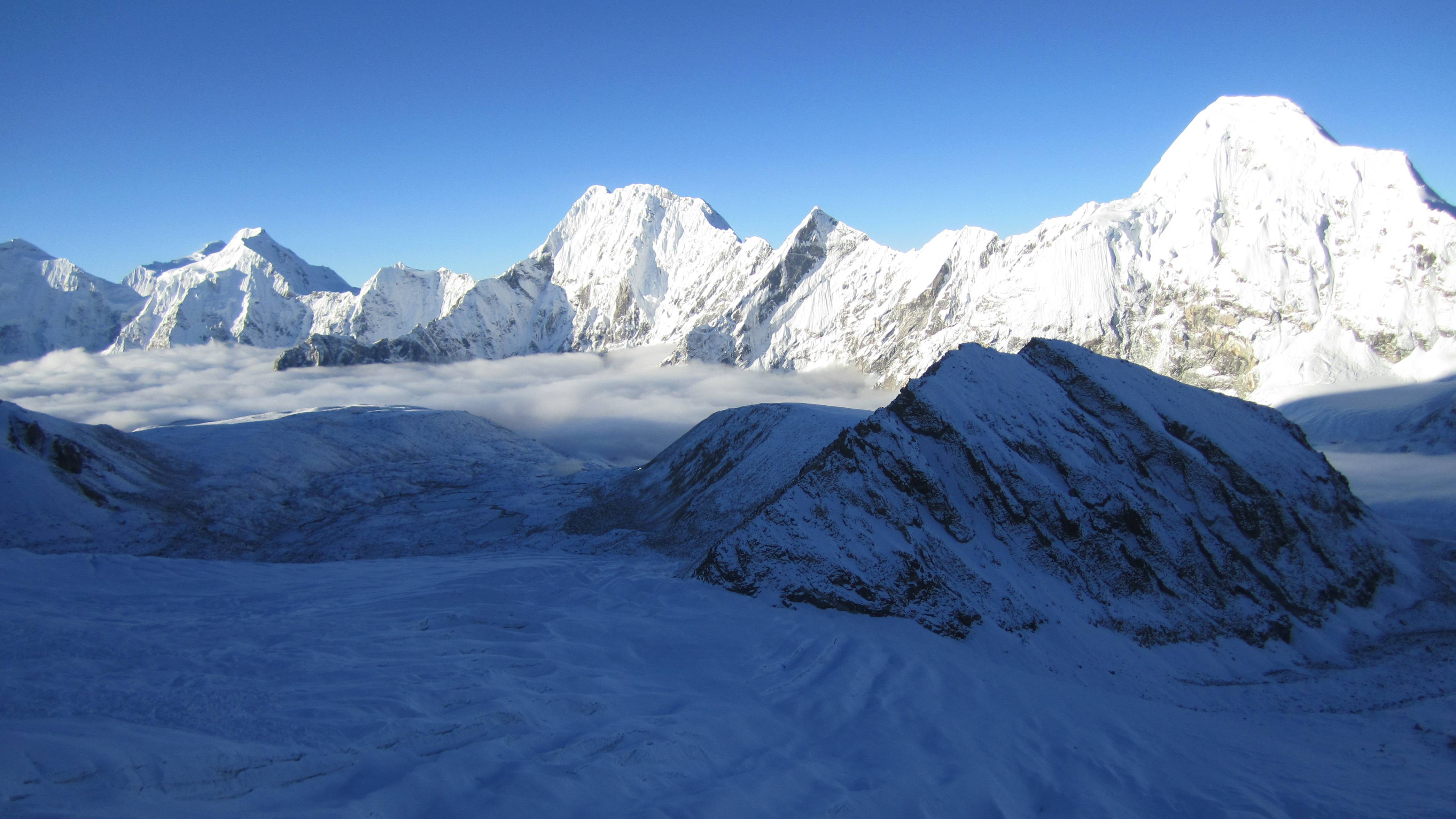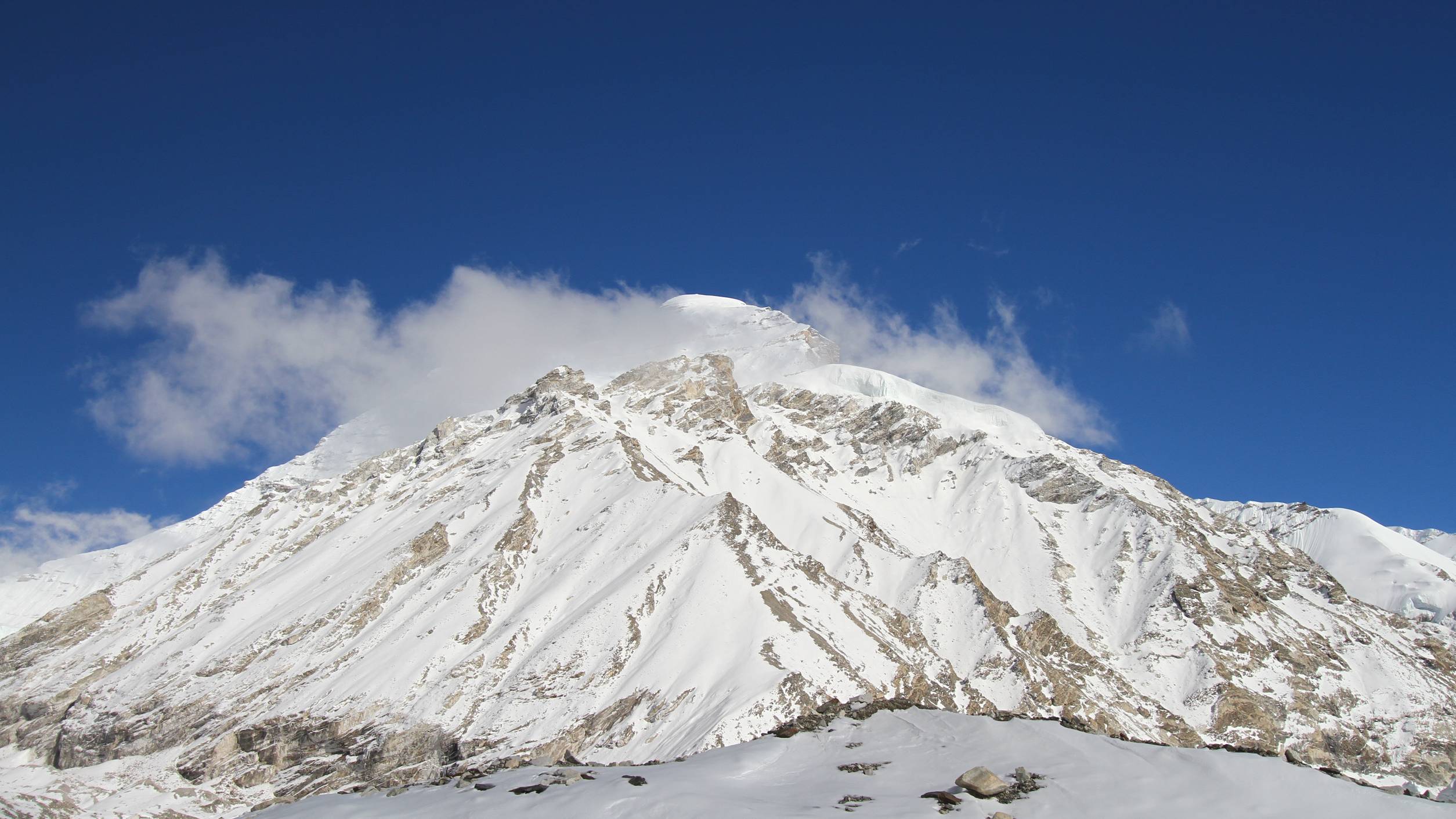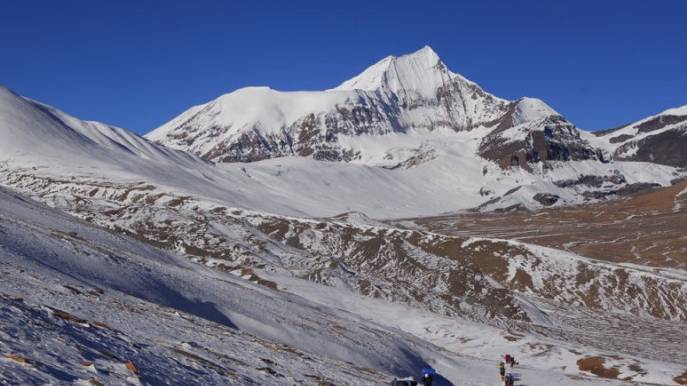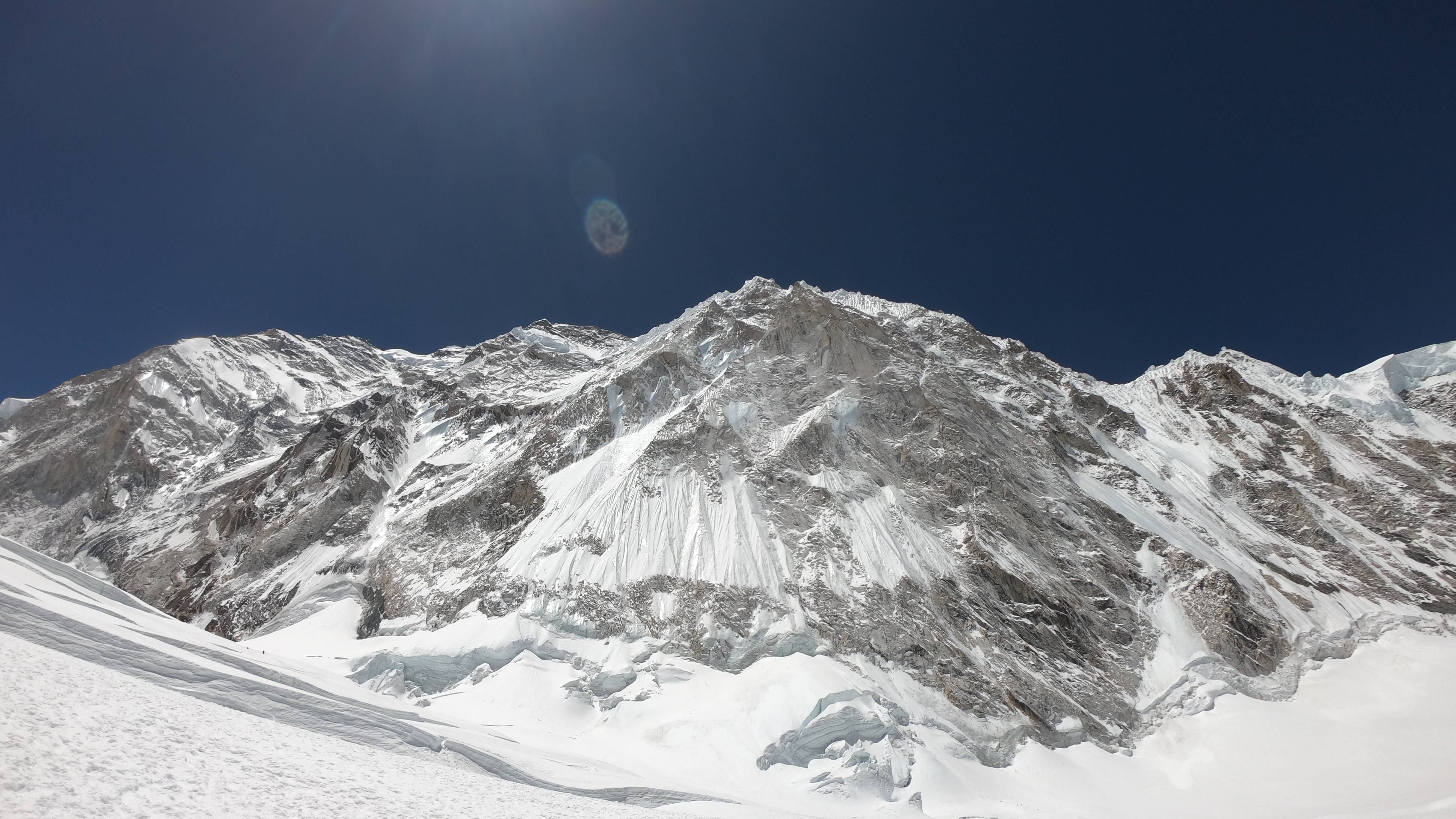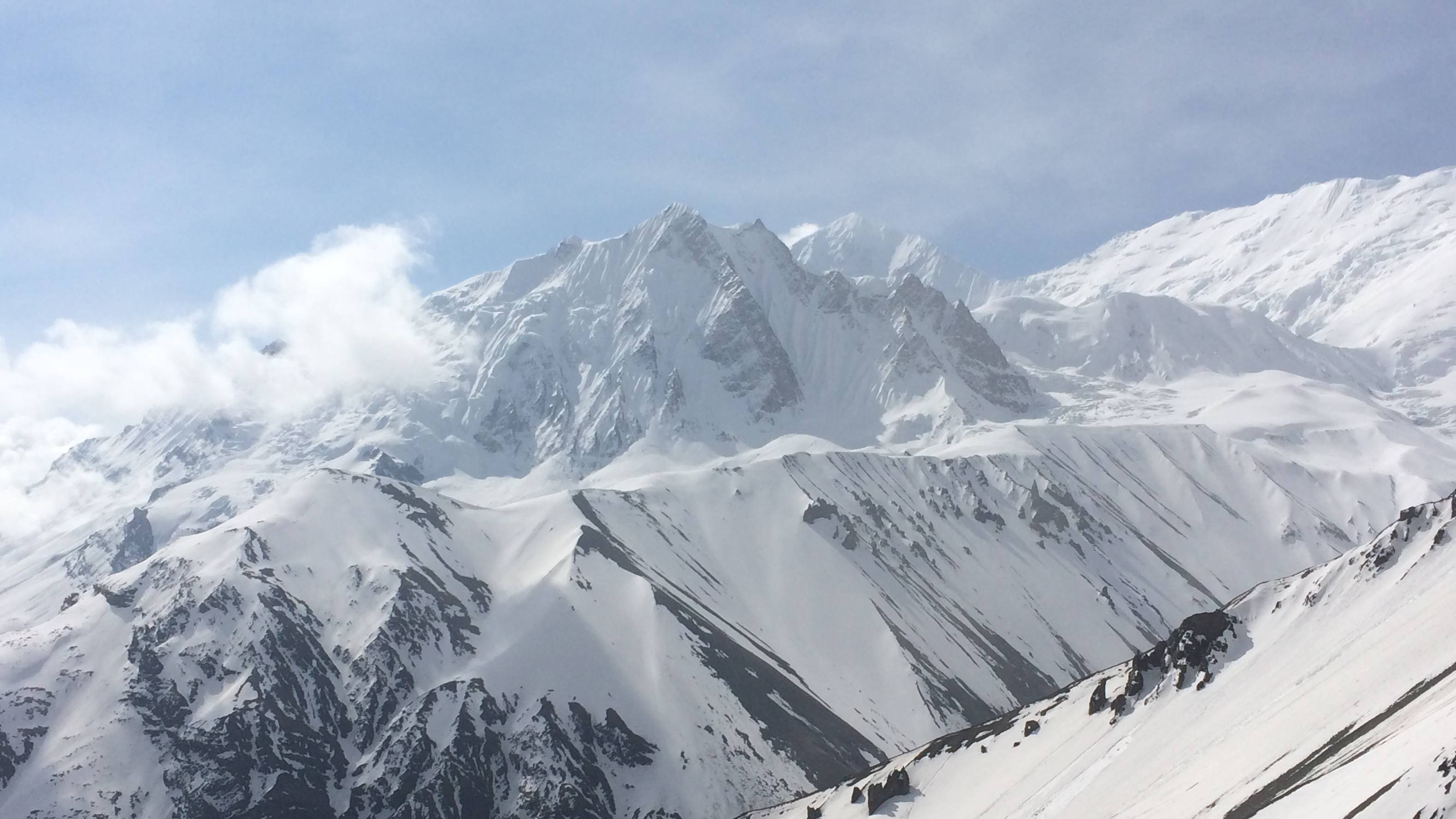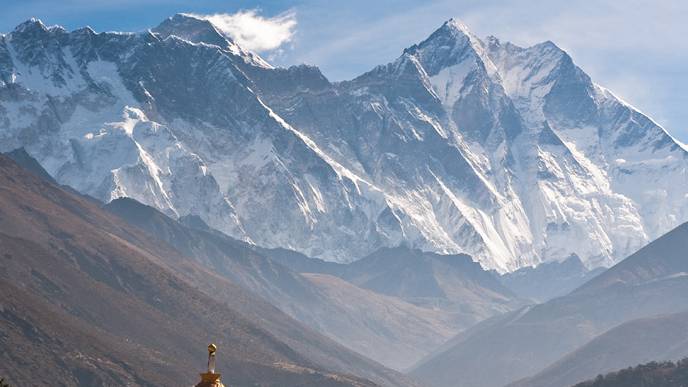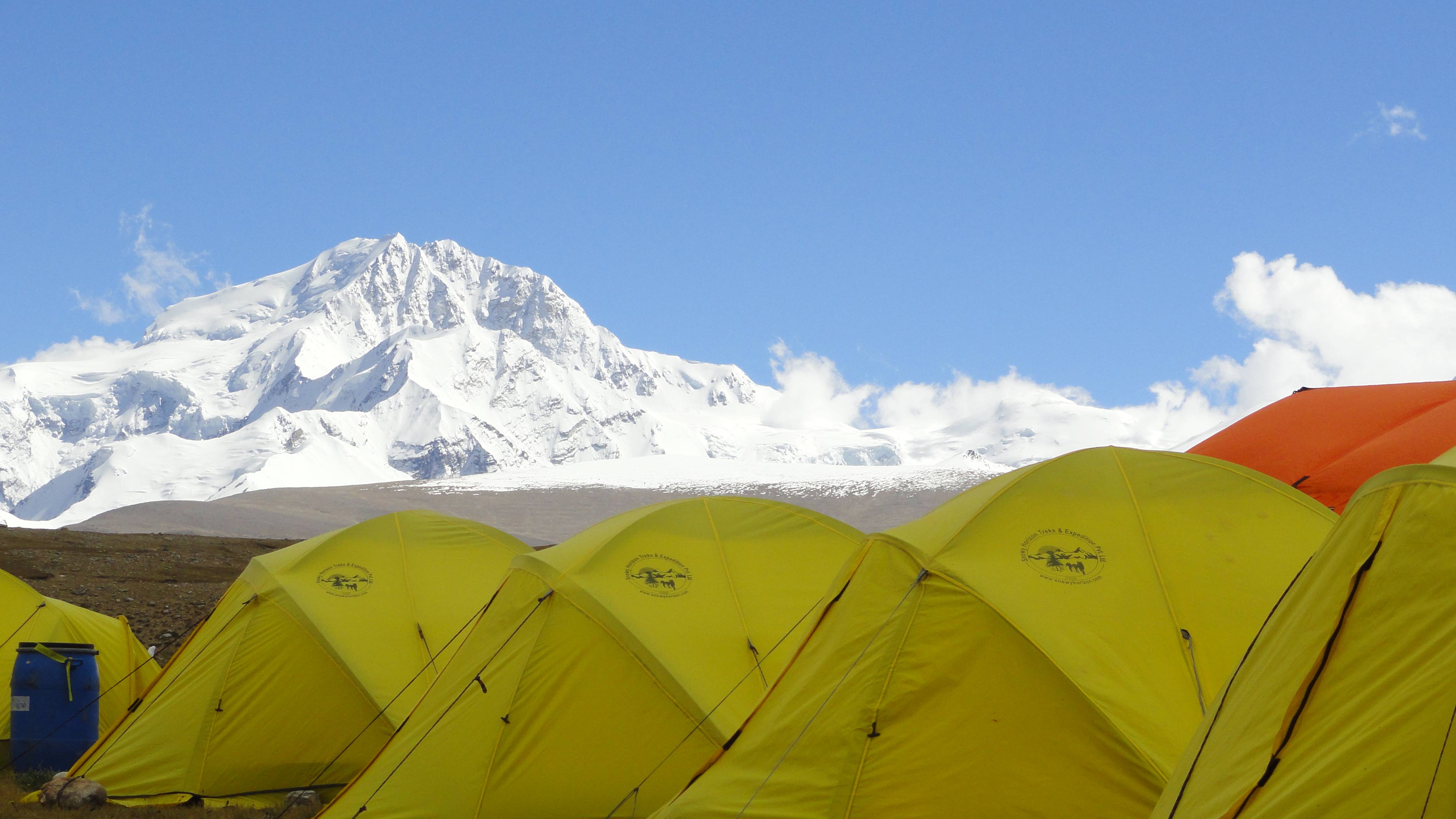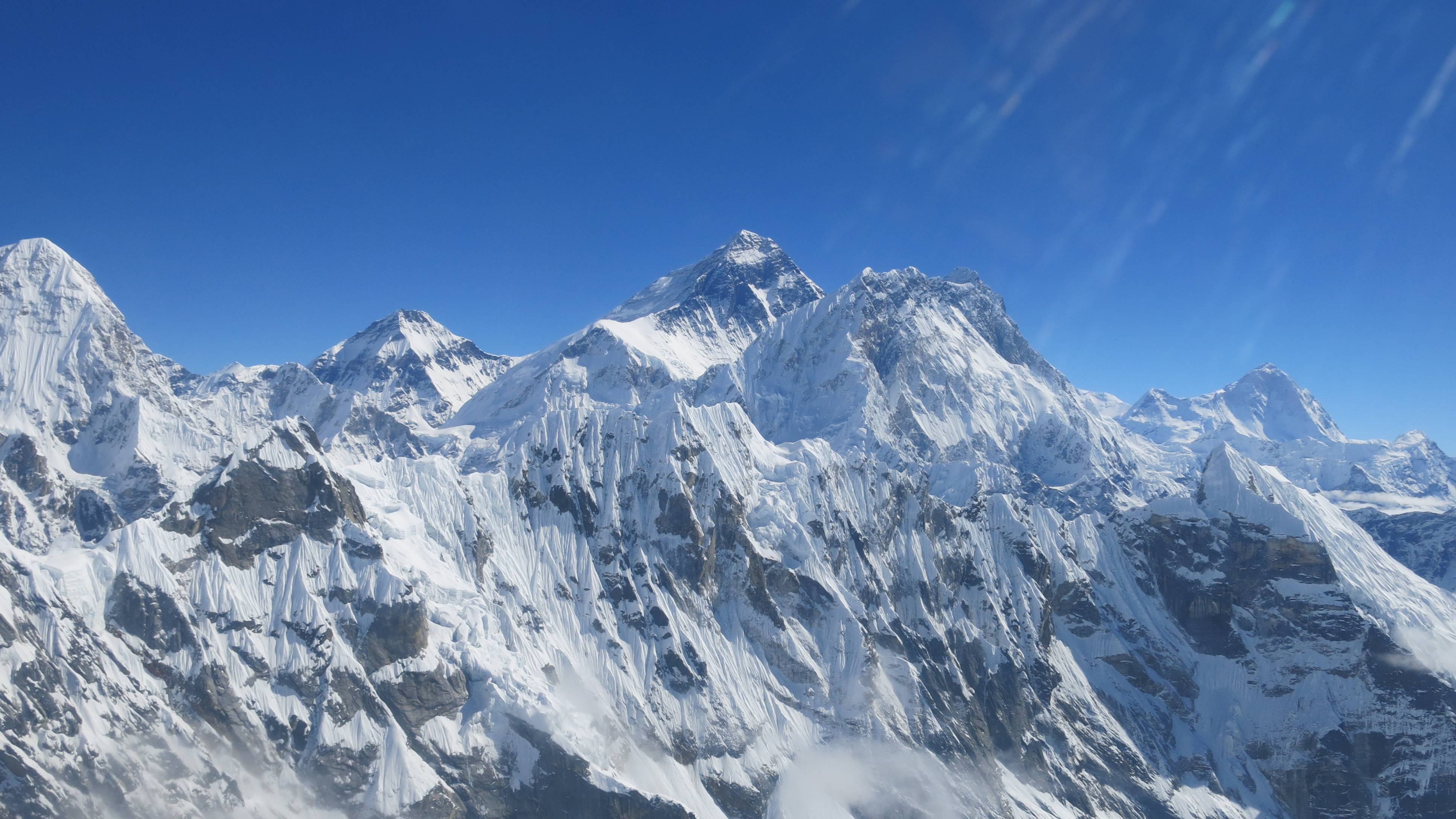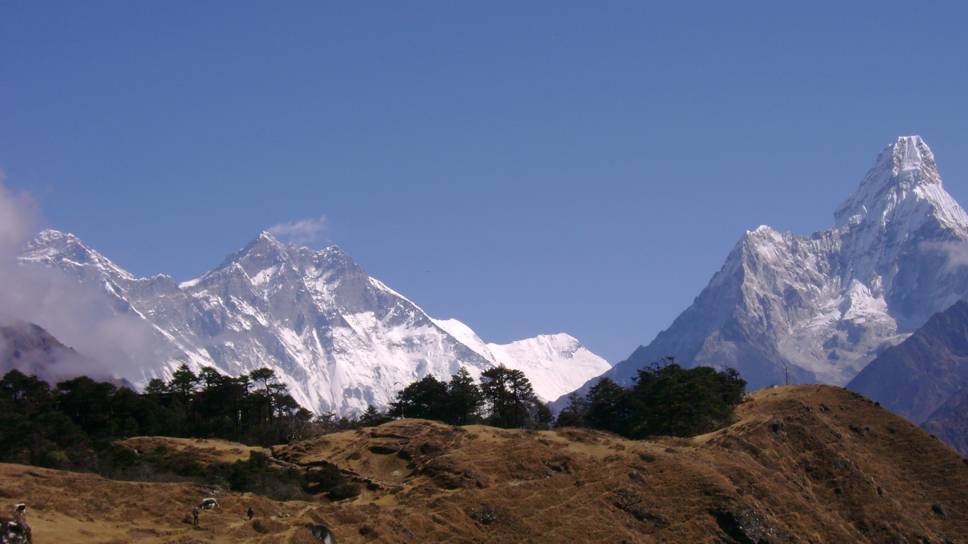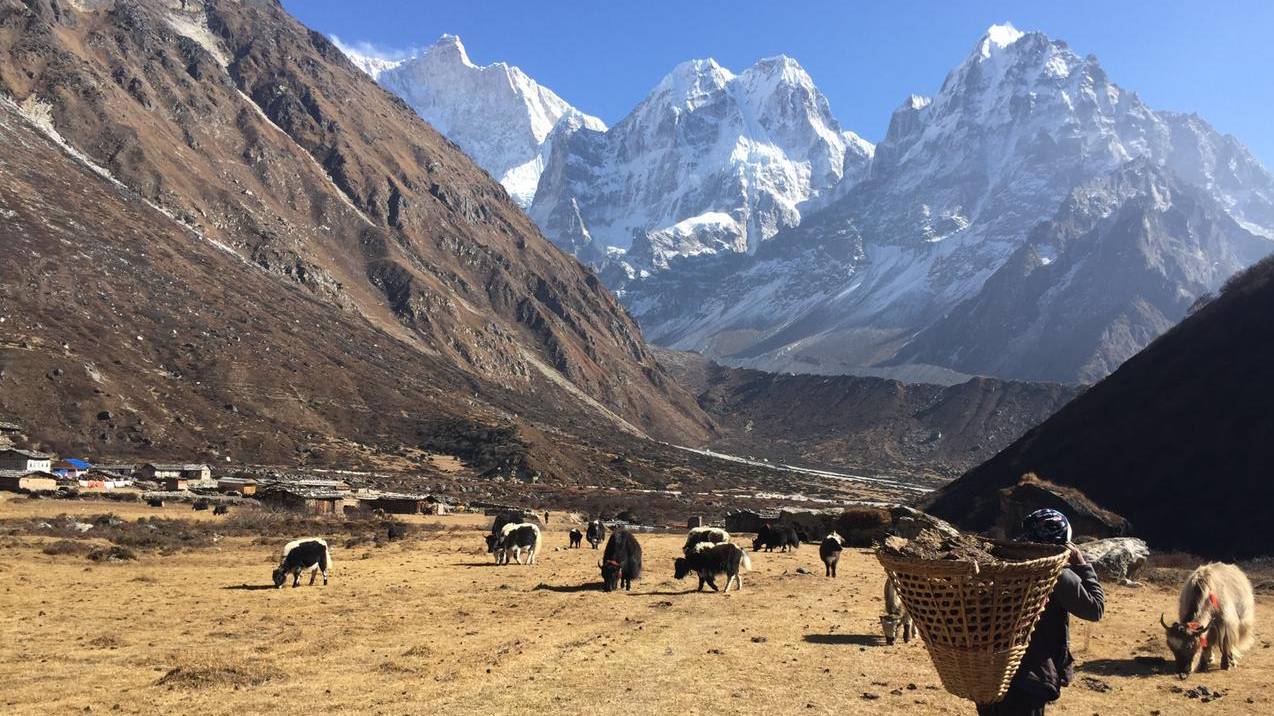Manaslu Expedition
Overview
“Experience, explore, and enjoy the expedition of the 8th highest mountain on earth, Mt. Manaslu (over 8000m) with the well-organised and professional team of Snowy Horizon in both the spring and autumn seasons of the years.”
Mt. Manaslu a part of the Nepalese Himalayas in the Gorkha massif with an altitude of 8163m is the world’s eighth highest peak. It is also known as Kutang. The location of this mountain peak is Mansiri Himal in the Gorkha district of Nepal. “Manasa” in Sanskrit means “Mountain of the Spirit” and is converted to this Gorkha’s highest peak Mt. Manaslu as "intellect" or "soul". This Mt. Manaslu is situated about 40 miles east of Mt. Annapurna in Kaski District. Manaslu is an imposing mountain being of 3092m in prominence it extends from the crops cultivation area to the area permanently covered with snow and ice; hence it looks like a serrated wall of snow and ice hanging in the sky. Manaslu's long ridges and valley glaciers offer feasible approaches from all directions and culminate in a peak that towers steeply above its surrounding landscape.
Manaslu region is located in Central Nepal and was opened to trekkers only in 1991. But lots of mountaineering expedition teams had access for a long time. In 1950 a group headed by H.W. Tilman trekked this area for the first time and ever since then this area has been quite popular among tuff trekkers. This area is still restricted to a limited number of groups and only organized trekkers in groups can trek in this area. Manaslu region was very remote and rescue was very difficult. However, these days it had been improved and an easy excess of helicopter evacuation has been permitted and trekkers and climbers can be assured of their safety in case of emergency.
Mt. Manaslu Expedition:
Even though Mt. Manaslu is located in a remote and isolated area and the first photographs were obtained only in 1950 by a British expedition, it was surveyed for climbing by a Japanese expedition in 1952 and after a few attempts between 1953 and 1956. Manaslu was finally climbed by the Japanese in 1956. This Japanese team had all female members which introduced the first women successor to climbing over 8000m peak. Mt. Manaslu Expedition requires about 6 weeks duration due to the long approach to reach the base camp of the mountain. However, we can use a helicopter transfer to make an expedition shorter if required.
This Manaslu Expedition was considered one of the most dangerous mountain climbing activities in the past and is now converted into one of the easy and less technical attempts in the autumn season of the year. The benefits of professional rope fixing and trail-making facilities have been provided through our organization “Expedition Operators Association” EOA for the last few years which makes climbers an easy and comfortable climbing experience in Mt. Manaslu. This is why Snowy Horizon Expeditions team has been regularly organizing the fixed Departure Snowy Manaslu Expedition in the autumn season of each year whereas we have only optional and requested expedition projects in the spring season. In spring we suggest choosing this trip by the experienced climbers only.
Mt. Manaslu Expedition Base Camp Services:
In the Base Camp,
- Snowy Horizon Treks & Expedition provides very professional, supportive and friendly mountaineering logistic services from Kathmandu to the ABC. Our objective is to ensure good quality, supportive, safe, friendly, stress-free, and comprehensive service to maximize summit opportunity.
- We provide a comprehensive service organizing all necessary permits, and climbing documentation, traveling logistics including airfares, ground transportation, porters, and other individual services required by mountaineers. On the track to the ABC, we organize all required accommodation and food.
- Our cook and helpers prepare and serve three delicious freshly cooked and plentiful meals a day and ensure that hot and cold drinks are available 24 hrs a day.
- We provide spacious expedition quality personal tents for all our clients.
- We also provide a dining tent, kitchen tent, toilet facilities and portable shower facilities, and tent accommodation for our staff.
- We provide access to communication including satellite telephone and internet access, and solar panels to charge your batteries.
Above Base Camp (Only on full board Service),
- Above base camp, we provide personal tent and food, which is prepared by their climbing Sherpa. We provide UHF/VHF handheld radios on the mountain to maintain communications between ABC and high camps.
- We provide very professional, supportive and friendly mountaineering logistic services from above the base camp also.
- We provide a personal climbing Sherpa guide to help the clients to reach the summit. The secret to success on Manaslu is a strong and experienced climbing Sherpa. No matter how good and experienced a climber is, it is a long slog. Personal climbing Sherpa will set up camp 1 and camp 2 and camp 3 including food provisions, fuel and oxygen, and will guide and assist the client on the summit day.
- We provide spacious expedition quality personal tents for all our clients above base camp.
Approaches to ABC:
The trek into the base camp of Manaslu is absolutely breathtaking and takes you back in time when all the Himalayan mountains were approached on foot. We have 2 options for the trekking route on Manaslu Expedition these days. Taking the opportunity of the first option, the trek starts from Dharapani of Manang district after the 2 days drive from Kathmandu via Besishahar at about the elevation of 1300m and gradually trekking up to Larkya La pass (5216m) via Bhimtang from where the restricted trekking area begins. After Larkya La Pass you trek down to Samagaon on the 3500m elevation via Dharamshala and Samdo which is the human settlement considered the pre-base camp of the Mt. Manaslu Expedition. Then in one day, you can easily approach the ABC (Advance Base Camp). You can use the Samagaon-Arughat route of trekking while returning which means you are completing the Manaslu circuit trekking by either side along with the climbing to the Manaslu summit. It is a perfect way to acclimatize before base camp is reached and to take on climbing relatively quickly since you are going to be experiencing the 5216m elevation beforehand. The second option is as in the past that we were using the trek which starts at a low elevation of 950m in Soti Khola via Arughat after 6/7 Hours drive from Kathmandu and rises gradually over next 7 trekking days. From the village of Soti Khola situated in the low country, the trek climbs through narrow gorges, rhododendron forest and local pastures to emerge into the higher alpine country with Tibetan influences.
The Advanced Base Camp (ABC) (4800m) is located at the lateral moraine of the Manaslu Glacier and it can be reached within 7-8 days' trek or there is also the option of flying into Samagaon or ABC by helicopters from Kathmandu on your advance demand.
Climbing Routes:
- Manaslu has many interesting routes leading to the common summit and many of them were climbed and explored. The standard commercial route is along the original route of the 1956 Japanese expedition up the Northeast face.
- The climb is straightforward and only slightly more technical than Cho Oyu or Shishapangma, however with a low Base Camp it is a long climb and with relatively high objective avalanche risk.
- Traditionally there are 4 camps above base camp C1 (5,500m), C2 (6,300m), C3 (6,700m) and C4 (7,300m). The terrain encountered on the ascents varies from glacier crossings to steep snow steps and requires a good understanding of basic alpine climbing techniques. Manaslu has been climbed Alpine style but traditionally all commercial operators practice expedition style to improve the chances of summit success for the clients.
- The benefits of professional rope fixing and trail making facilities have been provided through our organization “Expedition Operators Association” EOA since last few years which makes climbers an easy and comfortable climbing experience in Mt. Manaslu.
Day-to-Day Itinerary:
01 Sep: Day 01: Arrival at Kathmandu Airport and Hotel transfer.
02 Sep: Day 02: Preparation, Briefings, Last minute shopping and formalities.
03 Sep: Day 03: Drive from Kathmandu to Besisahar (950m-6 Hrs.), lodge.
04 Sep: Day 04: Drive to Dharapani (1300m-5 Hrs.); lodge.
05 Sep: Day 05: Trek to Tilje (2300m-6 Hrs.); Lodge.
06 Sep: Day 06: Trek to Bhimtang (3590m-6 Hrs.); lodge.
07 Sep: Day 07: Rest & Acclimatization Day in Bhimtang, lodge.
08 Sep: Day 08: Cross Larkya La (5215m) and trek to Shamdo (3875m-10 Hrs.), lodge
09 Sep: Day 09: Trek to Sama Gaon (3780m-3 Hrs.), lodge.
10 Sep: Day 10: Trek to Manaslu Base Camp (4700m-4 Hrs.), set camping.
11 Sep-02 Oct: Day 11-32: Climbing period; summit Manaslu (8163m), full camping.
03 Oct: Day 33: Preparation for return to Kathmandu; Clean Base Camp.
04 Oct: Day 34: Trek back to Sama Gaon, lodge.
05 Oct: Day 35: Trek to Namrung (2550m-5 Hrs.), lodge.
06 Oct: Day 36: Trek to Philim village (2300m-6 Hrs.), lodge.
07 Oct: Day 37: Trek to Machha Khola (1330m), lodge.
08 Oct: Day 38: Trek to Soti Khola Drive to Arughat (950m), lodge.
09 Oct: Day 39: Drive to Kathmandu, 7 hours; hotel accommodation (BB Plan).
10 Oct: Day 40: D-Briefing, rest and contingency day, farewell dinner in Kathmandu.
11 Oct: Day 41: Transfer to the airport for final departure.
Day-to-Day Itinerary:
25 March: Day 01: Arrival at Kathmandu Airport and Hotel transfer.
26 March: Day 02: Preparation, Briefings, Last minute shopping and formalities.
27 March: Day 03: Drive from Kathmandu to Sotikhola (1165m-6 /7 Hrs.) via Arughat (950m), lodge.
28 March: Day 04: Trek to Machhakhola (1330m-5 Hrs.); lodge.
29 March: Day 05: Trek to Jagat (1350m-6 Hrs.); Lodge.
30 March: Day 06: Trek to Ngyak (2300m-5 Hrs.); lodge.
31 March: Day 07: Trek to Namrung (2550m-6 Hrs.), lodge.
01 April: Day 08: Trek to Syalla village (3150m-5 Hrs.), lodge
02 April: Day 09: Trek to Sama Gaon (3780m-4 Hrs.), lodge.
03 April: Day 10: Rest and acclimatization day at Sama Gaon, lodge.
04 April: Day 11: Trek to Manaslu Base Camp (4700m-4 Hrs.), set camping.
05 April-30 April: Day 12-37: Climbing period; summit Manaslu (8163m), full camping.
01 May: Day 38: Preparation for return to Kathmandu; Clean Base Camp.
02 May: Day 39: Trek back to Sama Gaon, lodge.
03 May: Day 40: Trek to Namrung (2550m-5 Hrs.), lodge.
04 May: Day 41: Trek to Philim village (2300m-6 Hrs.), lodge.
05 May: Day 42: Trek to Machhakhola (1330m), lodge.
06 May: Day 43: Trek to Sotikhola Drive to Arughat (950m), lodge.
07 May: Day 44: Drive to Kathmandu, 7 hours; hotel accommodation (BB Plan).
08 May: Day 45: D-Briefing, rest and contingency day, farewell dinner in Kathmandu.
09 May: Day 46: Transfer to the airport for final departure.
Full Board Service Cost : Please contact us by email or call us
Cost Include
Fixed Departure Cost: US$ 12500 per Person
- All arrival and departure transfers with Snowy Horizon’s assistance.
- 4 Nights 3 Star Hotel accommodations in Kathmandu on BB Plan as per itinerary.
- Kathmandu-Dharapani/Machha Khola-Kathmandu private transport.
- Complete and well-furnished camping facilities at Advanced Manaslu Base Camp.
- Toilet and shower tents in the camping with each member box tent.
- Three meals a day (BLDtea/coffee) and tea-house /lodge accommodation during the trek.
- Freshly cooked 3 meals a day (BLDtea/coffee) by Snowy professional cook in ABC.
- 50kg: 40kg per person individual baggage allowance for trekking up and down to ABC.
- Annapurna & Manaslu Conservation Area Project (ACAP and MCAP) entry permit.
- Expedition royalty and climbing permit for climbing the normal route of Mt. Manaslu (8163m).
- 1:1 experienced private climbing Sherpa guide during trek and climb (ManasluApproached).
- Fully paid government-appointed Liaison Officer for the expedition team.
- Required high-altitude food for CI, CII, CIII, and CIV to the climbing member &support Sherpa.
- Rope and route fixing charges to the fixing team and organization.
- 3 Oxygen bottles (4L) -2 for Members and 1 for Sherpa with mask & regulator sets.
- Emergency oxygen mask and regulator for emergency medical use at Base Camp.
- Sharing dome tents for camp I, II, III, and IV between the member and the Sherpa.
- All wages, equipment, medical, and accidental Insurance for the Sherpa & involved staffs.
- Gas heater in the dining, solar panel, and petrol generator for light and charging your devices.
- Satellite phone for emergency communication with the cost of US$ 5 per minute call at ABC.
- First aid medical kits for the group and the staffs at the advance base camp.
- Our service charge and government taxes levied in Nepal.
- Necessary assistance for individual travel arrangements where required.
- Farewell Dinner in a typical Nepali restaurant with a domestic culture show in Kathmandu.
- Snowy Horizon Special Gifts (T-shirt/Pashmina etc.)
Cost Exclude
- Lunch and Dinner during your stay in Kathmandu (except farewell dinner).
- Laundry, communication expenses, and Internet uses.
- Clothing, packing items or bags, personal medical kit, camera/video fees, and trekking gears.
- Any extra expenses arising out of various/unforeseen situations
- Any additional staff other than those specified in the package.
- Rescue, repatriation, medicines, medical tests, and hospitalization expenses for members.
- Summit bonus to your private Sherpa guide for the summit push(a Minimum of US$ 1200.00)
- Insurance policy for medical treatment and helicopter search and rescue for members.
- Permits for walkie-talkie& filming, skying, paragliding etc.
- Defined and listed personal trekking and climbing gear for the member.
- Tips to Base Camp Staffs is mandatory; a minimum of US$ 200 per member for the kitchen team.
- Any other item not mentioned in the “Full Board Service Package Include” section.
Base Camp Service Cost : Please contact us by email or call us
Cost Include
Fixed Departure Cost: US$ 8500 per Person
- All arrival and departure transfers with Snowy Horizon’s assistance.
- 4 Nights 3 Star Hotel accommodations in Kathmandu on BB Plan as per itinerary.
- Kathmandu-Dharapani/Arughat-Kathmandu private transport with group and members.
- Complete camping sets like kitchenware, kitchen, and dining tents with furniture like tables and chairs.
- Toilet and shower tents and one individual member tent at ABC.
- Three meals a day (BLD-tea-coffee) and teahouse /lodge accommodation during the trek.
- Freshly cooked 3 meals a day (BLD-tea-coffee) by Snowy professional cook in ABC.
- 40kg: 30kg per person individual baggage allowance for trekking up and down to ABC.
- Annapurna & Manaslu Conservation Area Project (ACAP/MCAP) entry permit.
- Expedition royalty and climbing permit for climbing the normal route of Mt. Manaslu.
- Government-appointed Liaison Officer for the expedition fully paid.
- Wages, equipment, medical, and accidental Insurance for involved staff.
- Solar panel with batteries for light and devices charging in the Base Camp.
- Satellite phone for communication with the cost of US$ 4 per minute at ABC.
- First Aid medical kits for the Group and the staff.
- Our service charge and Government taxes levied in Nepal.
- Necessary assistance for individual travel arrangements.
- Farewell Dinner in a typical Nepali restaurant with a domestic culture show in Kathmandu.
- Snowy Horizon Special Gifts (T-shirt/Pashmina etc.).
Cost Exclude
- Lunch and Dinner during your stay in Kathmandu (except farewell dinner).
- Climbing Sherpa Guide, high altitude food, and tents above ABC (Camp: 1-2-3-4).
- Ropes, any other climbing gears and services above ABC (Camp: 1-2-3-4)
- Laundry, communication expenses, and Internet uses.
- Clothing, packing items or bags, personal medical kit, camera/video fees, and trekking gear.
- Any extra expenses arising from various/unforeseen situations like natural calamities, landslides, political disturbances, strikes, changes in Government regulations, etc.
- Any additional staff other than specified.
- Rescue, repatriation, medicines, medical tests, and hospitalization expenses for members.
- Medical and Travel Insurance with helicopter search and rescue for members.
- Permits for walkie-talkies & filming if special camera.
- Defined personal climbing gears.
- Tips to Base Camp Staff (Mandatory minimum US$ 250.00 per Member in Total)
- Any other item not mentioned in the “THE PACKAGE COST INCLUDES” section.
Notes
- Cost defers on Hotel Category for Hotels in Kathmandu.
- The itinerary is changeable and modifiable as per the needs and time frame of the clients.
- The cost will be re-calculated if the itinerary is changed or modified.
- Additional activities may be added as per request with nominal additional cost.
- For any kind of changes please contact us by email or call us.
- Grade: Mountaineering
- Elevation: 8,163m (26,763ft)
- Location: Nepal / Manaslu Region / Lamjung District
- Coordinates: 28°33′0″ N 84°33′35″ E
- Estimation Cost: US$ 8500 to US$ 12500
- First Ascent: Toshio Imanishi and Gyalzen Norbu (Japan), May 9, 1956
- Season: Late spring (traditionally less hazardous) and autumn
- Duration: 41 days (typically)
- Group Size: 02-15 person per Group

